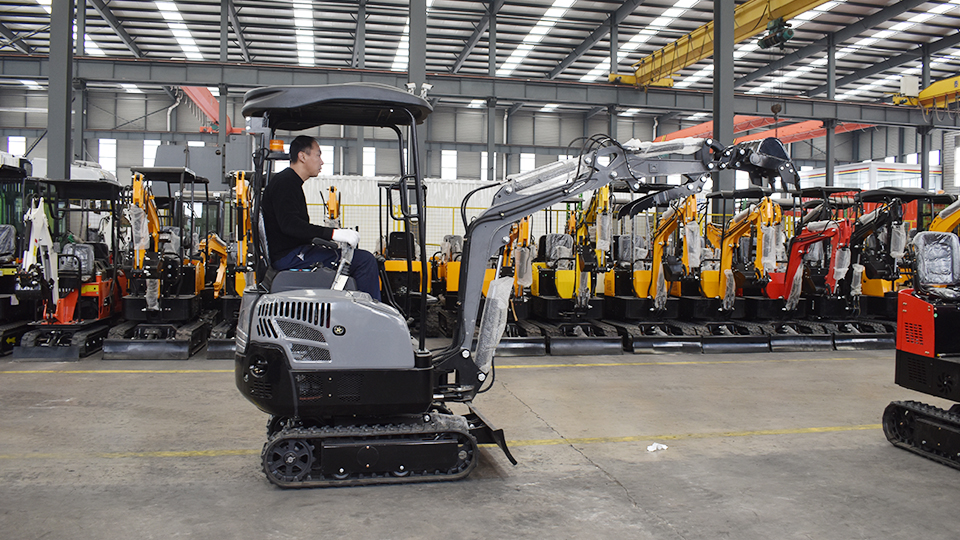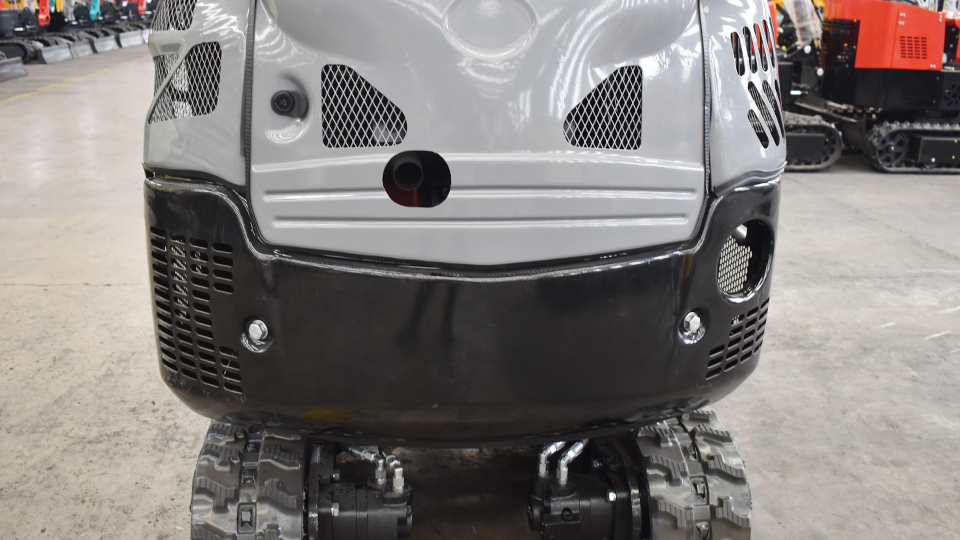Selecting the Right Excavator Size: Matching Machine to Task for Optimal Performance
Excavators, those powerful and versatile earthmoving machines, are indispensable assets on construction sites, mining operations, landscaping projects, and demolition jobs. However, the sheer range of excavator sizes available – from compact mini-excavators to colossal mining behemoths – can make selecting the right machine for a specific task a critical decision. Choosing an undersized excavator can lead to inefficiency, project delays, and increased wear and tear, while an oversized machine can result in higher operating costs, limited maneuverability, and unnecessary environmental impact.
This technical article delves into the key factors that influence excavator size selection for various tasks. We will explore the different size classes of excavators, analyze the specific demands of common excavation jobs, and provide a comprehensive framework for matching the right machine to the work at hand, ultimately optimizing productivity, cost-effectiveness, and safety.
Understanding Excavator Size Classes
Excavators are generally categorized by their operating weight, which directly correlates with their power, digging force, bucket capacity, and overall size. While specific classifications may vary slightly between manufacturers, the following provides a general overview of common excavator size classes:
Mini-Excavators (0-10 metric tons / 0-22,000 lbs): These compact machines are characterized by their low weight, narrow width, and excellent maneuverability in confined spaces. They are ideal for tasks such as trenching for utilities, landscaping, light demolition, and working in residential areas.
Small Excavators (10-20 metric tons / 22,000-44,000 lbs): Offering a balance of power and maneuverability, small excavators are versatile for a wider range of tasks, including general construction, small-scale earthmoving, and utility work.

Medium Excavators (20-40 metric tons / 44,000-88,000 lbs): These are the workhorses of many construction sites, providing significant digging power and reach for tasks like medium-scale earthmoving, road construction, and foundation excavation.
Large Excavators (40-80 metric tons / 88,000-176,000 lbs): Designed for heavy-duty applications, large excavators excel in mass excavation, mining, and large infrastructure projects. They offer substantial digging forces and bucket capacities.
Super-Large/Mining Excavators (80+ metric tons / 176,000+ lbs): These massive machines are primarily used in large-scale mining operations for overburden removal and mineral extraction. They possess immense power and bucket capacities.
Key Factors Influencing Excavator Size Selection
Choosing the appropriate excavator size involves considering several critical factors related to the specific task and the job site:
1. Digging Depth and Reach Requirements:
Task Demand: The depth and reach required for the excavation are primary determinants of excavator size. Deeper trenches, higher loading heights, and excavations in hard-to-reach areas necessitate larger machines with longer booms and arms.
Machine Capability: Each excavator model has specific digging depth and reach specifications. Consult the manufacturer's data sheet to ensure the machine can effectively perform the required excavation without being overextended.
2. Bucket Capacity and Material Volume:
Task Demand: The volume of material to be moved and the required cycle times are crucial considerations. Larger buckets move more material per cycle, increasing productivity for large-scale earthmoving projects.
Machine Capability: Excavator bucket capacities are directly related to the machine's size and power. Matching the bucket size to the material density and the machine's lifting capacity is essential for efficient operation and preventing overloading.
3. Material Density and Type:
Task Demand: The type and density of the material being excavated significantly impact the required digging force and the appropriate bucket size. Dense materials like rock or heavily compacted soil require more powerful excavators with robust digging arms and smaller, reinforced buckets. Lighter materials like topsoil can be handled with larger buckets on smaller machines.
Machine Capability: Larger excavators generally offer greater breakout force (the force exerted by the bucket teeth to break ground) and arm/bucket cylinder force, enabling them to handle denser materials more effectively.

4. Job Site Conditions and Accessibility:
Task Demand: The physical constraints of the job site play a crucial role in excavator selection. Confined spaces, narrow access points, and soft or uneven ground conditions may necessitate smaller, more maneuverable machines with specialized undercarriages (e.g., rubber tracks for reduced ground pressure).
Machine Capability: Mini and small excavators excel in tight spaces. Consider the machine's dimensions, turning radius, and ground pressure to ensure it can operate safely and effectively on the site.
5. Lifting Requirements:
Task Demand: If the excavator will be used for lifting and placing heavy objects (e.g., pipes, concrete barriers), the machine's lifting capacity at various reaches is a critical factor. Larger excavators generally offer greater lifting capacities.
Machine Capability: Consult the excavator's load chart, which specifies the maximum weight the machine can safely lift at different boom and arm positions. Ensure the selected machine has sufficient lifting capacity for the heaviest objects to be handled.
6. Transportation and Logistics:
Task Demand: The ease and cost of transporting the excavator to and from the job site should be considered, especially for short-term projects. Larger excavators require specialized transport vehicles and permits, increasing logistical complexity and cost.
Machine Capability: Mini and small excavators can often be transported on standard trailers, offering greater flexibility and lower transportation costs.
7. Project Timeline and Budget:
Task Demand: The project's timeline and budget constraints can influence the choice between renting or purchasing an excavator and the size of the machine. Larger excavators typically have higher rental and purchase costs.
Machine Capability: Selecting the most efficient machine for the task can minimize operating hours and fuel consumption, contributing to cost savings.
8. Operator Skill and Comfort:
Task Demand: The experience level of the operators should be considered. While larger excavators offer more power, they can also be more complex to operate effectively. Operator fatigue can also be a factor on long projects, making cab comfort and ergonomics important.
Machine Capability: Modern excavators offer various features to enhance operator comfort and productivity, such as ergonomic controls, comfortable seating, and advanced monitoring systems.
Matching Excavator Size to Specific Tasks
To provide a more practical understanding, let's examine common excavation tasks and the typical excavator sizes best suited for them:
1. Trenching for Utilities (Water, Sewer, Gas, Electrical):
Typical Depth: 3-10 feet
Material: Soil, clay, sometimes rock
Space Constraints: Often confined residential or urban areas
Recommended Size: Mini-excavators (0-5 tons) and small excavators (5-10 tons) are ideal due to their maneuverability and ability to work in tight spaces.
2. Landscaping and Site Preparation:
Typical Depth: Shallow excavation, grading, material moving
Material: Topsoil, loose fill
Space Constraints: Varies
Recommended Size: Mini-excavators (1-8 tons) and small excavators (8-15 tons) offer a good balance of power and versatility for landscaping tasks.
3. Foundation Excavation for Residential Buildings:
Typical Depth: 4-12 feet
Material: Soil, clay, potentially some rock
Space Constraints: Moderate
Recommended Size: Small excavators (10-20 tons) and medium excavators (20-25 tons) provide the necessary digging depth and bucket capacity for typical residential foundations.
4. Road Construction and Earthworks:
Typical Depth: Varies significantly
Material: Soil, rock, asphalt
Space Constraints: Generally open areas
Recommended Size: Medium excavators (20-40 tons) and large excavators (40+ tons) are required for the significant earthmoving involved in road construction.
5. Demolition (Light to Medium Structures):
Typical Reach: Dependent on building height
Material: Concrete, brick, steel
Space Constraints: Can be confined
Recommended Size: Small to medium excavators (15-30 tons) equipped with appropriate demolition attachments (e.g., breakers, shears) are commonly used. Reach and stability are crucial factors.
6. Mass Excavation for Large Infrastructure Projects (Dams, Highways):
Typical Depth: Significant
Material: Large volumes of soil and rock
Space Constraints: Generally open areas
Recommended Size: Large excavators (40-80 tons) and super-large excavators (80+ tons) are necessary for the high production rates required.
7. Mining Operations (Overburden Removal, Mineral Extraction):
Typical Depth: Very significant
Material: Rock, ore
Space Constraints: Large open pit mines
Recommended Size: Super-large/mining excavators (80+ tons) are specifically designed for the extreme demands of mining environments.
The Importance of Attachments
It's crucial to remember that the versatility of an excavator is significantly enhanced by the range of available attachments. The specific task often dictates the need for certain attachments, which can influence the optimal excavator size. For example, using a hydraulic breaker on hard rock may require a larger, more powerful excavator than simply excavating loose soil. Common excavator attachments include:
Buckets (various sizes and types for different materials)
Hydraulic Breakers (for breaking rock and concrete)
Shears (for cutting steel and other materials)
Grapples (for handling logs, debris, and scrap)
Compaction Wheels (for soil compaction)
Augers (for drilling holes)
Ensure that the selected excavator has the hydraulic capacity and operating weight to safely and effectively utilize the necessary attachments.
Conclusion: A Strategic Approach to Excavator Selection
Choosing the right size excavator is a critical decision that directly impacts project efficiency, cost-effectiveness, and safety. By carefully evaluating the specific demands of the task, the job site conditions, and the capabilities of different excavator size classes, contractors and project managers can make informed choices that optimize performance and minimize potential problems.
A thorough assessment of digging depth, reach requirements, material volume and density, site accessibility, lifting needs, transportation logistics, budget constraints, and the required attachments is essential. Consulting manufacturer specifications, seeking expert advice, and considering the long-term utilization of the machine will contribute to a strategic approach to excavator selection, ensuring that the chosen machine is the right tool for the job, every time.
Post time:Sep-25-2020
